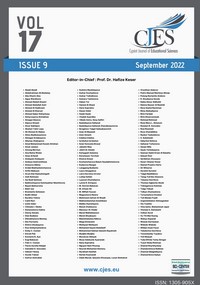Musical problem-solving skills of music education students: An evaluation on performance
Musical problem-solving skills of music education students: An evaluation on performance
Author(s): Gözde Yüksel, Ezgi Babacan, M. Devrim Babacan, Tolga YükselSubject(s): Music, School education, Educational Psychology, Behaviorism, Pedagogy
Published by: Birlesik Dunya Yenilik Arastirma ve Yayincilik Merkezi
Keywords: Instrument training; musical problem-solving; study process; problem-solving skills;
Summary/Abstract: This research was conducted to examine the musical problem-solving skills of music education students during the process of studying a new piece of music. The correlational survey model was used to determine the musical problem-solving level of the students and the relationship between problem definition and resolution levels. The criterion sampling method was used to determine the participants of the study (i.e., 14 flute students from the department of music education). To collect the data, an observation form consisting of definition, synthesis and analysis steps, selected by the researchers for the basic musical problems of musical instruments education, consisting of tonality, articulation, nuance, tempo, interval and rhythmic patterns content, was used by using the 'Bridge Model' developed by Adair. Observation took place in three steps. Problem identification was the first step in solving a musical problem, which was to detect the existence of the problem, and students identified all other problems except for the nuance. In the synthesis step, we determined which of the options the students used to solve the problem she or he defined. Instead of using specific solutions to the problems, the students mostly preferred the option of playing the piece from beginning to end. In the analysis step of the musical problem, while the students were playing the musical piece from beginning to end, the results of the problems studied for the solution were evaluated. It was determined that the students did not have any problems with the tonality and rhythm of the work, but had difficulties in the analysis of articulation, interval and nuance. In addition, it was determined that there was a positive significant relationship between the students’ levels of defining and solving musical problems. According to the general results, students are able to define the problem, but cannot apply different approaches to how to solve the problem in the synthesis and solution stages. This research is limited to determine the situation of that based on individual practice performance on a single instrument. For this reason, future research can provide a detailed perspective on the cause of the problem by considering different instrument performances supported by student and teacher opinions.
Journal: Kıbrıslı Eğitim Bilimleri Dergisi
- Issue Year: 17/2022
- Issue No: 9
- Page Range: 3145-3159
- Page Count: 15
- Language: English

